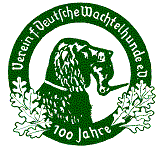The Wachtelhunde
by Bruce Ranta

|
For Lil and I, hunting grouse with Heidi is most enjoyable. Heidi seems to love this hunt the most. Our favorite hunting method is to walk down logging or other bush roads, with one of us staying back with the dog and the other walking ahead sixty or seventy yards to set up. Once we're ready, the dog is sent in to work the brush and forest edge up to the lead hunter. This works well, as the best grouse roads have a heavy undergrowth of raspberry, hazelnut and wild rose bushes growing in thick tangles among old, discarded tops of felled trees and regenerating, young stands of spruce, balsam and poplar. It's tough going for a dog and close to impervious to hunters. Miles and miles of such roads can produce fabulous wing shooting when grouse cycles are peaking. In A Field Guide in Colour to Dogs (Octopus Books Ltd, London), the wachtel is said to "need good training and a firm hand" I have found this to be true with Heidi. Now and then, she will simply do things her way and refuse to heed my advice. For example, although she has a good nose, a nose that should be "as large as possible" by the way, she tends, at times, to rely on her eyesight and will not search hard for a downed duck or a dummy if it's in heavy cover. It can take repeated commands to get her to search it out. Eventually she gets the message. Nevertheless, as novice trainers, Lil and I feel we have been a success with Heidi. Watchels are supposedly eager and intelligent learners and this was made most evident not long after we first got her. One day, when Heidi was only four months old, she was pestering Lil to pay attention to her. It appeared Heidi wanted Lil to tell her to do something, so Lil tried hand signals. Heidi responded so readily to the "go right'/ "go left'/ and "go back" hand signals that Lil thought I had been secretly training her to do this, which I had not. Five months later, on the first day of Heidi's first hunt, she blind retrieved eight ducks with the aid of handling. This was also the first time she had touched a real duck. Though the wachtels are relatively strong dogs, they do not have the strength or stamina of the Labrador or Chesapeake, which are by far the preferred hunting dogs in northern Ontario. They tire more quickly than either the Lab or the Chessie and do not have as much power in thick saw grass or in the bulrushes. The coat of the wachtel is longer but finer and does not offer the warmth and protection desirable for late fall, cold-water duck hunts. On the plus side, wachtels are very intelligent and enthusiastic hunters that seem to quickly adapt to whatever species you are hunting. One trait I have found to be genuinely amazing is that wachtels bark when they have flushed a grouse or are on the trail of a snowshoe, but will sit quiet as a mouse in the blind when hunting waterfowl. When sent to retrieve a crippled duck or goose, however, they remain mute. We also use Heidi when moose hunting. If a moose is nearby and she can smell it, she will rear up on her haunches and give a soft growl from deep in her throat. She won't bark, not even on those occasions when a moose has come into plain view. A bear sighting, on the other hand, always evinces a long bout of baying. Barking when flushing small game is a very handy attribute in the thick woods where I hunt. Often, even at ten or fifteen yards, the bush is so thick the dog will be invisible. If the dog ranges further, as it will if it picks up scent, the bark can be the only clue a bird has been flushed. More often than not, the grouse will fly only a short distance into a tree and can usually be found and flushed again by the hunter. Wachtels are true hunting dogs and must be given plenty of exercise and training. Wachtels are noted for developing strong bonds with their masters, and it's highly recommended to spend as much time with them as possible and to take them with you whenever you can. Due to their calm demeanor, wachtels make excellent house dogs. Having witnessed several wachtels in action, including my own Heidi, I can honestly say they are great hunting dogs well suited to the habitat of northern Ontario. They do not have the capabilities of a true water dog and tend to have a hard mouth with upland game, but these are minor irritants. They are unsurpassed as flushers of game. Hunters looking for a dog to find, flush and retrieve game in dense cover, who are willing to put in the time and effort needed to train and develop the dog's potential, would, I'm sure, be more than pleased with the wachtelhunde This is especially true for those who tramp the woodlands and marshes of the Northeast and Midwest, where game can be scarce and opportunities limited. Perhaps the wachtelhunde will be a familiar breed in North America someday. They already have my vote. Story copyright 1994, Bruce Ranta. Photographs Copyright 1994, Bruce Ranta. Published in Gun Dog Magazine, August/September 1994. Story and photos reprinted here by permission.
|
|
For more information or to find a Wachtelhund to purchase, visit wachtelhund.com or contact: John Oberhaus joseph9970@fbcom.net 563-210-8273 |
